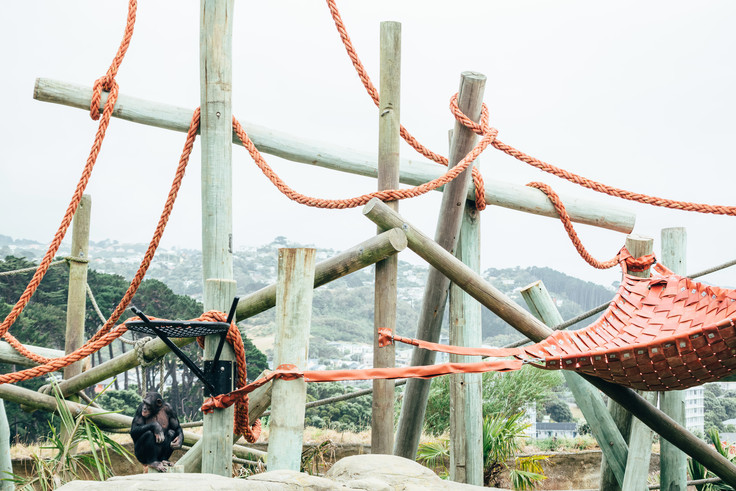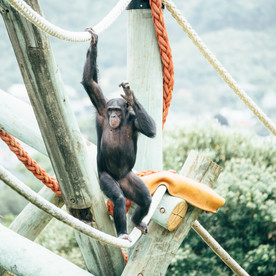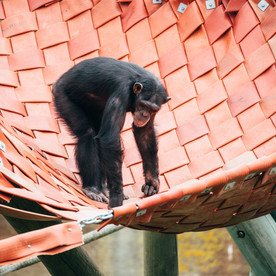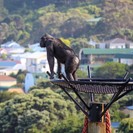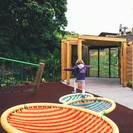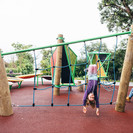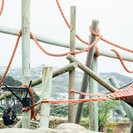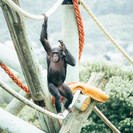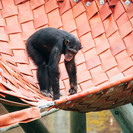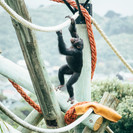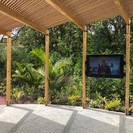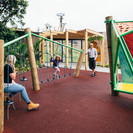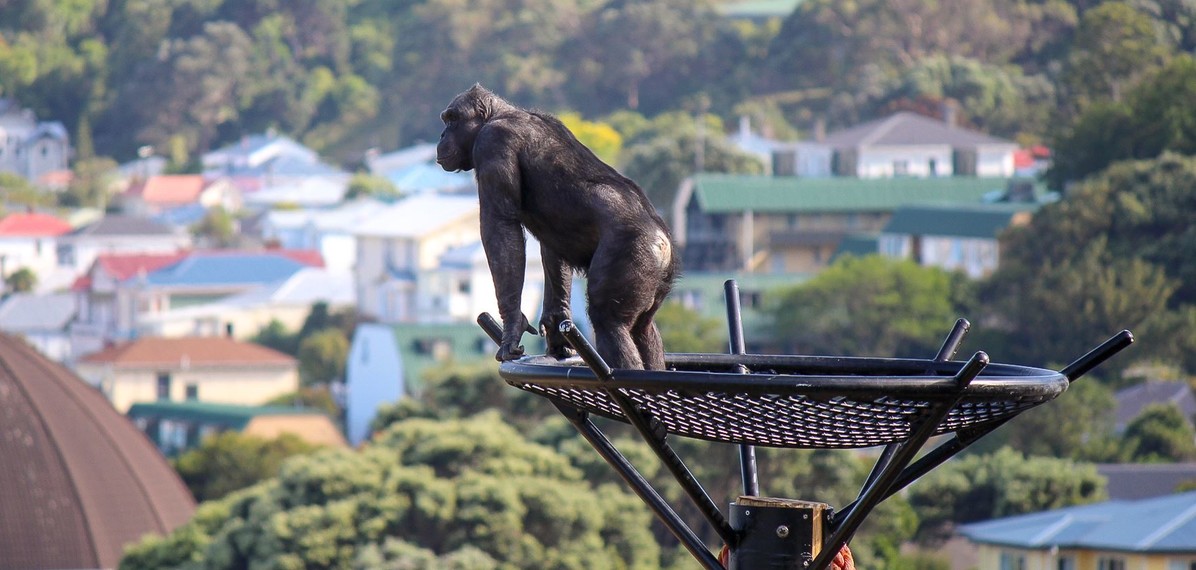
Showcase
- NZILA Category Winner / Playgrounds — 2019
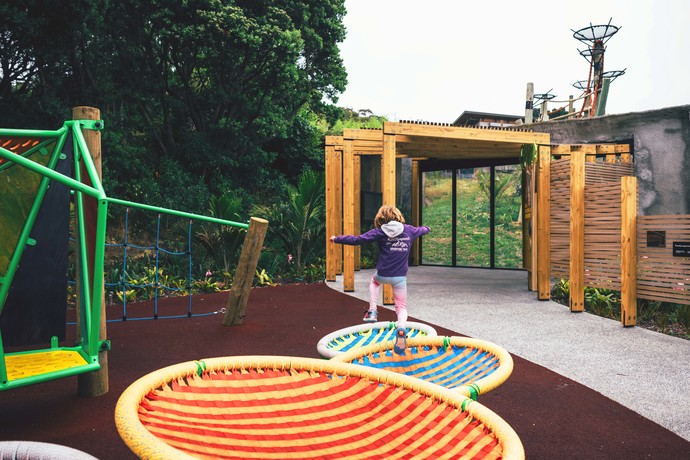
Just like us, young Chimpanzees are very curious and love to interact with younger and smaller visitors. This new visitor viewing area gives the community the opportunity to see the Chimpanzee troop from another point of view and allows kids to play side by side with the Chimps.
In 2017 we had a unique opportunity to design a new playground habitat for Chimpanzees, and at the same time provide a more extensive choice of viewing and immersion for Zoo visitors, with play at the forefront of our thinking.
Our brief stemmed from the pressing need to improve the habitat for the Chimpanzees. Specifically, we needed to provide the an environment that promoted natural behaviour physically, mentally, and in a group dynamic, whilst also increasing visitor visibility of the whole habitat. We needed to design a Chimp playground.
The site was made up of a 6-8m high figure eight concrete wall which encloses the edge of the external Chimpanzee park at Wellington Zoo, as well as a disused Chimp House already flagged for removal. The whole site is approximately 2400m2 with an average slope of 1:8, typical of Wellington town belt topography.
It’s not often that the client is a primate, which meant we would work closely with the animal care team at Wellington Zoo to understand Chimp behaviour. Drawing on their experiences with the troop we were able to establish a robust palette of materials that were ‘Chimp proof’.
The first priority was to renovate the existing climbing structure by making it more complex with a variety of horizontal + vertical poles and ropes, providing the Chimps with a network of choice in how they moved across their environment and how they could interact and play with it.
Secondly, planting was required for sensory purposes, natural shade and enrichment as well as providing natural criteria to match their environment.
Chimpanzees live in large fission-fusion communities of many individuals. In the wild their communities can range from 5 to 120 individuals. Within this community there are many families and allegiances that dictate the group hierarchy and the fission effect of the community. It is not natural for Chimpanzees to want to spend all their time together 24 hours per day, so it is paramount that we provide them with an environment that allows the fission-fusion behaviour.
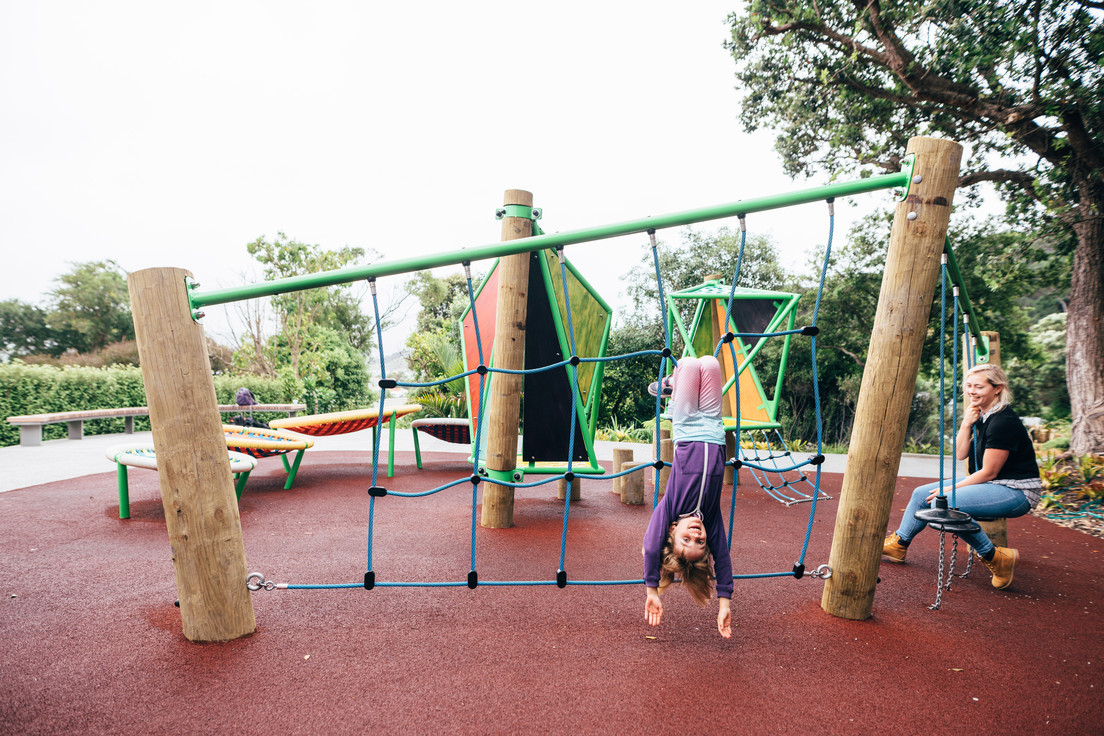
Judges Citation:
In response to a unique and challenging brief, with primates as the primary client, this design response excels at blurring the ‘enclosure boundary’ to effectively allow for an improved visitor experience and provision of chimp habitat. This is achieved by building on the opportunities and constraints of the zoo’s topography within the wider Wellington Town Basin, as well as the requirement to utilise existing enclosure buildings, materials and enclosure space.
The captive environment has been successfully enhanced while strengthening educational and conservation outcomes. Attention to detail through material use and plant selection is clear, alongside the care in understanding how the chimps and the public will utilise spaces both inside and outside the enclosure. Robust detailing and specifications for sustainable materials to fulfil the zoo’s carbon zero certification is celebrated: hardwood timber poles recycled from Wellington’s old trolley bus network; chunky ropes reclaimed from Centre Ports tug boats; and swings and hammocks made from recycled hoses donated by the NZ Fire Service. Mimicking the ‘play equipment’ within the enclosure for visiting chimps on the outside – separated only by glass – is also a successful outcome.
Not only is Chimpanzee Park a highlight for visitors to Wellington Zoo, it also provides for a visual connection out to the cityscape allowing chimps to survey their wider habitat. The judges were also conscious of the efforts undertaken during construction, including minimising disruption to the chimps during the seven week construction period, overcoming access issues and stressing the importance of the bespoke materials and outcomes to the contractors. This project has set a high bar for design excellence in Aotearoa
Client: Wellington Zoo
Company: Isthmus
Internal collaborators
Sophie Jacques, Lisa Rimmer, Aaron Miller, Sam Gwynn, Earl Rutherford
External collaborators
Wellington Zoo
Key contractors
Naylor Love
